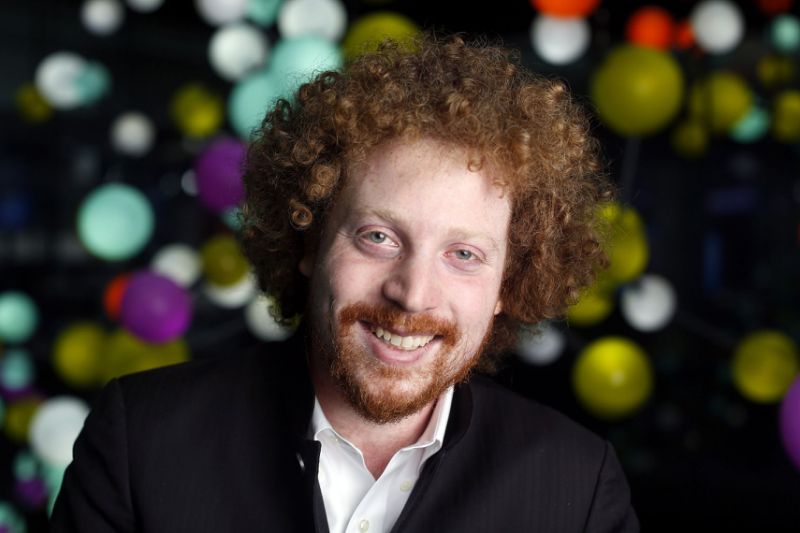

(Bloomberg) — Creators of virtual beings can now thank the academy for giving their work real-world recognition.
Fable Studio Inc.’s “Wolves in the Walls” is a virtual reality adaptation of a Neil Gaiman children’s book, and it just won an Emmy for outstanding innovation in interactive media. The story uses virtual reality goggles and handheld motion controllers to cast the player in the role of an imaginary friend for 8-year-old Lucy as they investigate the source of strange noises in her home. Lucy is a class of character now referred to as a virtual being.
“This is the first virtual beings project to get an Emmy,” said Edward Saatchi, a co-founder of Fable, which was spun out of a VR movie studio owned by Facebook Inc. “It should really help in Hollywood, get people thinking that maybe we should put a virtual being in a movie or have a virtual being singer.”
But what are virtual beings? Saatchi’s definition is a digital character with whom you can build a two-way relationship. While there is nothing yet that fully meets the standard, a number of companies have sprung up with attempts ranging from computer-generated (CG) Instagram influencers to chatbots and AI-powered digital companions. Millions of people already deal with primitive virtual beings when they ask their smart speakers for the day’s weather or cooking instructions, Saatchi contends.
“If the question is whether this is a real thing — for sure,’’ said Sinan Aral, professor of information technology and marketing at MIT Sloan School of Management in Cambridge, Massachusetts. “This market is being made now.’’
For now, most of the action happens on Instagram. It’s been well over a decade since people realized that even a modest social media following can be converted into income, because brands will pay for ads that come with a personal touch. Now, entrepreneurs have figured out you can also manufacture micro-celebrities with computer graphics, and fans will still follow. For brands, CG influencers offer message control and flexibility without the messiness of dealing with real personalities.
“Because it is so blatantly a creation, the question of authenticity is moot,’’ said Sara Menouni, a creative director at Ykone, a Paris-based agency that pioneered influencer marketing. “This completely changes the game.”
The most famous among Instagram’s virtual beings is Lil Miquela, who has 1.6 million followers and in May showed up in a Calvin Klein commercial sharing a kiss with flesh-and-blood supermodel Bella Hadid. Miquela’s success has inspired a number of imitators. Shudu, created by a former fashion photographer, bills itself as the world’s first digital supermodel. Even KFC jumped on the bandwagon with a suave virtual version of Colonel Sanders.
Some of the most lifelike creations hail from Japan. Pink-haired Imma, a computer-generated face composited onto a photo of a real human model, is mostly indistinguishable from a real person. Another one is Saya, a virtual schoolgirl that debuted in 2015. The husband-and-wife team that created Saya said they made a habit of observing teenage women on the subway from behind the safety of sunglasses, considering what gives youthful skin a particular transparency or how the back of an ear should look.
Liam, a rare male character, is looking to break into the music business. The goal is to be the first virtual being to win a Grammy, said Hirokuni Genie Miyaji, a Tokyo-based entrepreneur who sold his previous business managing real influencers to fund the new venture. Liam plans to release its first song next month using a synthesized voice assembled, with the help of artificial intelligence, from five different human audio samples, Miyaji said.
Progress in making more believable virtual beings is a measure of how good the tech is getting, and there is a convergence of technologies under way, according to Fable’s Saatchi. Advances in natural language processing, machine vision and real-time computer rendering are giving avatars more agency, a persistent memory of earlier interactions and better understanding of their human interlocutors.
But these technologies are still in their early stages and adopting them too soon risks breaking the spell. There is a reason why most CG influencers stick to still photos — animating human hair, for instance, is notoriously tricky. The negative emotional response to artificial things that look almost but not quite human is common enough to have a name: “the uncanny valley.”
One bit of good news for the likes of Miquela is that their fans can be surprisingly forgiving. Mika Iimori, a 37-year-old living in Hiroshima, follows Imma and Liam on Instagram and says lifelike perfection is not the key to their appeal. She’d like to see them speak and move around, even if that means that occasionally they let the mask slip.
“I want to see them grow and change,” Iimori said. “If anything, that part is fun – you get to look forward to seeing what they can become. Same as a human. The incompleteness is attractive.”
To contact the reporter on this story: Pavel Alpeyev in Tokyo at [email protected]
To contact the editors responsible for this story: Edwin Chan at [email protected], Vlad Savov, Peter Elstrom
<p class="canvas-atom canvas-text Mb(1.0em) Mb(0)–sm Mt(0.8em)–sm" type="text" content="For more articles like this, please visit us at bloomberg.com” data-reactid=”38″>For more articles like this, please visit us at bloomberg.com
©2019 Bloomberg L.P.





